The changes we are witnessing today are being driven by the growing use of technology in everyday life. Artificial intelligence (AI) and self-learning machines are already altering the ways decisions are made and information communicated. The process is irreversible and accelerating. In the near future, chatbots will replace people in both B2C and B2B, while blockchain and cryptocurrencies will fundamentally change the world of finance. The Industrial Revolution 4.0 will bring far-reaching automation into manufacturing industries and the supply chains that feed them raw materials, components and even finished products. Services – initially those involving repetitive work – will become the domain of machines and software. Automatons and autonomous machines will replace people. All this will change the way we work, who we work for and how we are compensated. According to McKinsey Global Institute of the total displaced, 75 million to 375 million people may need to switch occupational categories and learn new skills, under our midpoint and earliest automation adoption scenarios; under our trendline adoption scenario, however, this number would be very small—less than 10 million. However, while many occupations will disappear from the employment landscape forever, many new professions will take their place. What skills will be in demand in the future? Which groups will gain, and which lose in the technological revolution?
The new digital economy will affect a growing number of people negatively. Machines will learn to perform the same work they’re doing now, only faster, more cheaply, and without mistakes. At the same time, a substantial proportion of employees will benefit. Scores of professionals will become more valued in the labor market, and thus better rewarded. Who will they be? What unique skills will they possess and what will make them treasured in the digital economy? Market observations and McKinsey studies show that the most sought-after employees will be those in the following three categories:
1. Highly-skilled workers
With advances in voice recognition, imaging technologies, Internet of Things (IoT) sensors, and big-data-based support and decision-making, low-skilled jobs are going to be automated. The market will value other skills: abstract thinking and the ability to analyze large amounts of data, drawing conclusions on their basis. The question future job candidates will be asked most often by recruiters is: “Do you know how to work with smart machines?”
Today, many advanced skills are acquired outside of universities; they are developed with experience, as jobholders expand their knowledge of their businesses. But the knowledge gained today will become obsolete within three-to-five years. This is particularly true as AI penetrates ever more industries.
Today’s man-to-machine communication and data exchanges relies on interfaces created five decades ago (keyboards, screens), or at least three decades ago (mouses, trackballs). These interfaces are rapidly aging as virtual reality, augmented reality, voice control and communication are becoming part of our everyday lives. What’s next? Is the human brain going to be connected to a machine through a direct neurological link? Will data banks be planted inside our heads to add to our memory and accelerate our abilities? Will the future belong to human cyborgs who will become ideal and highly-skilled workers? Or, will tomorrow be populated by symbiotic creatures who are part human and part machine, with people contributing their intuitions, emotionality and unpredictability, and machines ensuring rapid data searching, data-set associations and instant analysis? It will take another 10-to-15 years to answer these questions, but only 10 to 15 years. That’s not so long.
2. Global super stars
Rapid data networking and collaboration tools, such as e-mail and video conferencing, have reduced the differences between geographical regions and time zones. At any time, anyone in an organization can work with data, conduct analyses or access knowledge that resides or was created anywhere on earth. A company searching for a programmer, designer or communications expert today is free to pick candidates from around the globe. I have no doubt that this process will become easier even as hiring full-time programmers, renting office space to accommodate them and fitting them out with hardware and furnishings will become increasingly less cost-effective. Instead, companies will recruit globally, hiring and remunerating the best programmers in the world. All companies need to do is to run a general cost-benefit analysis and tie the pay of such professionals to their performance and the lead times they can offer. A quick and simple calculation will show whether a project will make money once the fees such programmers request is paid.
This approach will produce a faster return on investment while allowing the programmers to serve more customers every year. The fact that such experts work remotely will become less difficult or burdensome to the organization. Improved job-sharing technologies will help workers communicate efficiently, share responsibilities and deliver desired outcomes. Increasingly, we will see “super star” specialists outperforming whole teams of less competent employees. As a result, employers will cut costs, improve efficiency and facilitate creativity. Creativity, in fact, is what I think is going to be the key advantage of humans over machines. Yet, it is not entirely clear how we will deal with the social consequences of this process.
3. High-impact owners
I define owners as those who hold capital and are empowered to invest in new technologies – technologies with the potential to advance the digital revolution. These include AI (including machine learning, cognitive computing and deep learning), blockchain (and cryptocurrencies), tools to enable sharing economies, autonomous machines… the Industrial Revolution 4.0. Access to capital will become a tremendous competitive advantage. Prominent economic theories suggest that once resources are divided between capital investment and the labor force (in this scenario, labor has been automated), investment will generate profit roughly proportional to the contribution made. Since digital technologies reduce demand for labor in many sectors, the ultimate return on the ownership of smart machines (which are cheaper than people) will rise.
In today’s economy, venture capital can finance companies such as Instagram, which was sold for billions of dollars when it employed barely 13 people, thereby keeping its human capital costs to an absolute minimum. Have so few workers ever created such huge financial benefits in the global economy? Now that such things are possible, the people with access to capital, who can invest it in new technologies, will benefit the most from the digital revolution.
Even so, high-impact owners will have new challenges due to a serious value-generator that has arrived on the global market: the flexible, informal and low-cost startup. Today, small companies, liberated from rigid management procedures and technologically empowered, are poised to compete successfully against the largest market players by creating innovative products and services. Big corporations are therefore attempting to establish symbiotic relationships with these emerging entities, in which the large company’s capital (which can facilitate development and scale) is supplemented by the fresh perspectives and creativity contributed by startups. Innovative ideas supported by big money are thriving more than at any time in the history of business. Several factors will affect the ongoing success of this process. In choosing investment opportunities, corporate executives will need to be bold and discerning. It may well be that one of the key professions of the future will be a market analyst whose job will be to distinguish between start-ups that will generate profit and those doomed to fail. On the other hand, small innovative business owners will face the dilemma of who to sell their business to and whether big capital will gobble them up or leave them enough leeway to make autonomous decisions.
Mergers today are a different animal. They bring together capital with intellectual value and, often, ideas that still need to be fully crystallized. To engage in such mergers, all participants in this process need to adopt new attitudes, be open-minded and educate themselves. That said, I am convinced this type of capital utilization, combined with the energy and creativity of startups, will drive the global economy in years to come.
Finding your place
I believe that the unprecedented global economic growth of the past six decades, and the tremendous rise of digital technologies will affect the way we live, learn, communicate and work. In my view, the three groups that will enjoy special advantages in the new digital economy are those capable of working creatively with intelligent machines, those who are the best at what they do (the stars in their professions) and those with access to capital.
If, dear reader, you can find a place among any of these groups, your future will be bright. If you cannot, you may have to work a lot harder than before and be more creative to maintain your current professional position. And, even then, your future status may be uncertain.
Related articles:
– Looking for greater profits? Start sharing with me
– Will a basic income guarantee be necessary when machines take our jobs?
– Can machines tell right from wrong?
– The lasting marriage of technology and human nature

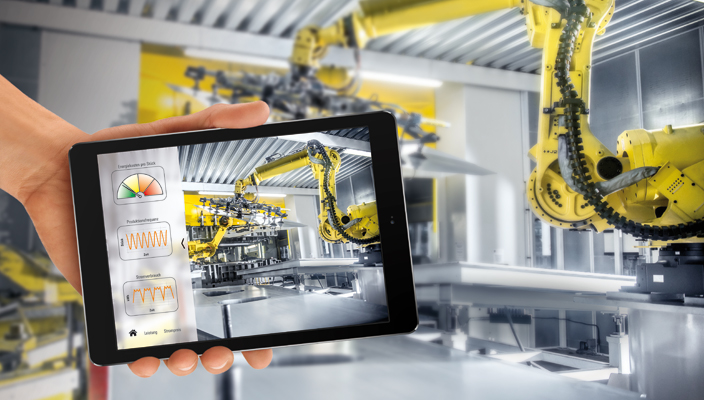

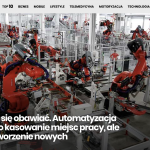

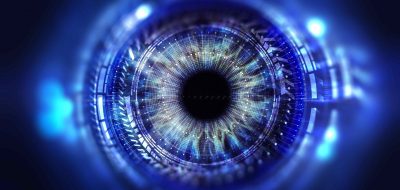
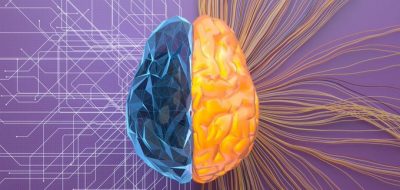
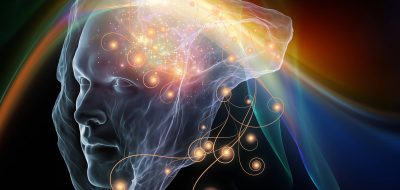


JacekPlacek5
The sharing economy, as many have noted, has generated enormous wealth. Because the definition of the sharing economy is ambiguous, quantitative analyses of its value are limited. A PricewaterhouseCoopers study published in 2015 predicts the sharing economy could reach $335 billion in spending by 2025 fueled by five primary components: travel, car-sharing, finance, staffing and streaming.
TomK
The real question is about our role, multi dimensional question…
Tom299
A neural network can “listen to” all of Bach and Mozart in hours, and train itself on the works of Shakespeare to produce passable pseudo-Bard. The idea of artificial creativity has become so widespread that there’s even a meme format about forcibly training neural network ‘bots’ on human writing samples, with hilarious consequences—although the best joke was undoubtedly human in origin.
Zidan78
Today we have people that recover from deep depresion thanks to stimulating certain nerves (vagus nerve). Patients live with the implanted device that simple makes them happier 🙂
There are also many other human-machine collaboration based on BCI. Have a look at: https://www.linkedin.com/pulse/human-machine-collaboration-which-you-probably-didnt-know-wawi%C3%B3rko/
Norbert Biedrzycki
Interesting example. Thank you
Acula
Interesting and still scary. Probably because people still cannot grasp it and the Matrix movie is too fresh for some and people still need to see the bright light of this tech advancement. And somehow it could not stop me thinking that “Indeed, jobs where human interactions, creativity and emotional intelligence matter should not be endangered” but this is already happening. Everyone is behind its mobile device and interaction hardly happening. Maybe a robot will help change that as we are so obsessed with devises that chatting to a robot will become the new norm of interaction…
Norbert Biedrzycki
Karel Doomm2
So what ends up mattering isn’t intelligence (as all structures are intelligent), but the extent (death) to which an intelligence can predict (influence) the future (as compare to other intelligences). As is true of any energy topology, what matters is shortest path predictions. We know the ultimate (if asymptotic) state (heat death), that can be predetermined once, but what we don’t know and can never know is exactly what the shortest path from any here and now to that one then and there.
johnbuzz3
I share your hope, but in a different way.
Humanity has gone through a similar transition – from agrarian to industrial. But the jobs created were not mechanics for farm machines, but using industrialization to solve problems on a new scale.
Similarly, I don’t see the new jobs coming from robot-caretaking, but from utilizing robots and AI to solve the problems that matter to each of us.
And championing those solutions, utilizing robots and AI, will be the new job market of the future.
So the new jobs…
AndrewJo
Scary. Probably because people still cannot grasp it and the Matrix movie is too fresh for some and people still need to see the bright light of god huge advancement. And somehow it could not stop me thinking that “Indeed, jobs where human interactions, creativity and emotional intelligence matter should not be endangered” but this is already happening. Everyone is behind its mobile device and interaction happening. Mane a robot will help change that as we are so obsessed with devises that chatting to a robot will become the new norm of interaction…
Tesla29
I share your hope, but in a different way.
Humanity has gone through a similar transition – from agrarian to industrial. But the jobs created were not mechanics for farm machines, but using industrialization to solve problems on a new scale.
Similarly, I don’t see the new jobs coming from robot-caretaking, but from utilizing robots and AI to solve the problems that matter to each of us.
And championing those solutions, utilizing robots and AI, will be the new job market of the future.
So the new jobs won’t be in building the robots, but in using them – just as computers took over some jobs, they created new industries of computer use.
TommyG
Don’t be so pessimistic
John McLean
Humans are nothing but a bunch of atoms.
TomCat
I’m pretty sure that the ratio between job lossed to automation and jobs created by automation is not 1:1. I would respectfully suggest that the losses will significantly outpace the creations.
Tom Jonezz
Exactly so, only I suggest that AI’s impact on some of the traditionally blue collar industries (although many are no longer blue collar) named above (such as automotive) will likely be less than many white collar, professional industries, like Medicine and Law.
Welcome the days when you can get a doctors appointment without notice or have your Conveyancing done by in a competent manner at a reasonable cost with any degree of confidence.
There are many layers of meanial work…
And99rew
I’m pretty sure that the ratio between job lossed to automation and jobs created by automation is not 1:1. I would respectfully suggest that the losses will significantly outpace the creations.
TomaszK1
The issue becomes that the technology itself becomes bigger than the problem or benefit it’s supposedly offering. The same issue keeps popping up, what is it that we’re trying to accomplish, in an effective manner. If the proposed solution isn’t efficient, productive or effective vs the CURRENT environment, there is never going to be a tipping point toward mass adoption.
TomK
That is why politician should talk about fundamental change of education system not about … taxing robots. The problem is not robotization but that after 16 Y of hard work at school our kids will have to compete with robots as they learn there only what machine can easly do after 2 weeks of being programmed !
Adam Spikey
Great perspective on the underlying speed and reasons for why AI has progressed. Sometimes you need to understand the past a little to more clearly see how thing will go in the future.
Norbert Biedrzycki
Close future. Very close
Karel Doomm2
Very thoughtful and informative article for a lay person such as myself to understand AI concepts.
Norbert Biedrzycki
Thank you
Norbert Biedrzycki
Automation and Artificial Intelligence will accelerate technical, social and emotional skills in the workforce.
John McLean
Environmental biofeedback is way more complex than a set of coded instructions …
Software can be self-referential but that do not implies that it by itself can deploy human like sentience.
Because, human sentience is an integrated environmental process where the hardware is – too – the software (some authors like to call that: Wetware )
Of course, Machines can deploy identity, but not to “feel what is to be a human” … ( for that, the machines must to emulate a complete universe from quantum scales…
Norbert Biedrzycki
How can you write an algorithm for something that is not fully understood? I would say that not until consciousness and idea or concept of soul is clearly defined can you ever begin to create artificial intelligence.
ZoraBora
Robotic process automation covering more and more rules based tasks is inevitable and you are right that it may bring unexpected side effects like creating more jobs or increasing creativity of those released from boring tasks ..:)
Norbert Biedrzycki
Check Batin
Good article
Norbert Biedrzycki
Per industry, AI’s potential value amounts 1-9% percent of revenue. The value as measured by percentage of industry revenue varies significantly among industries, depending on the specific applicable use cases.
Simon GEE
Surprised with pharma low position, looking at impact of AI and ML on TTM for new pharma products research phase can be shortened by 30 %, huge impact
Norbert Biedrzycki
In 69% of the opportunities to use AI are in improving the performance of existing analytics use cases. Deep neural networks can be used to improve performance beyond that provided by other analytic techniques.
Check Batin
That’s so freaky and bizarre and scary. I’m only on this sub to see how terrible our future looks and this pretty much sums it up.
Simon GEE
I think it has to do with the globalization of culture, via the internet, which exposes people to more ideas and information than ever before. Even the developing world is being connected via mobiles, and prices are dropping at an exponential rate.
National identities will blur, racial identities will blur, as will gender. What feels like crazy tumbrina nonsense today will perhaps be, in hindsight, the beginning of a new era of human relations where we’re more alike than ever before.
TomHarber
Nice read. kudos
CaffD
Utilizing technologies, for example, AI and robotics, retailers will utilize keen process mechanization to recognize, streamline and computerize work concentrated and dull exercises that are as of now performed by people, decreasing work costs through effectiveness from home office to conveyance focuses and stores. Numerous retailers are as of now extending innovation use to enhance the in-store registration process.
johnbuzz3
IT pioneers ought not just spotlight on the anticipated net increment of occupations. For the best esteem, center around increasing individuals with AI. Advance individuals’ occupations, reconsider old undertakings and make new ventures. Change your way of life to make it quickly versatile to AI-related openings or dangers
TomCat
Gartner’s enthusiastic projections stand out from the notices on the threats of AI sounded by top innovation industry voices, for example, Tesla CEO Elon Musk. Musk said the worldwide race to lead the improvement of artificial intelligence could prompt World War III, and forewarned that people must converge with machines keeping in mind the end goal to turn away getting to be insignificant as AI winds up far-reaching.
TommyG
The revolutionary impact of its market launch could be felt within a matter of months. Meanwhile, for one reason or another, it was still acceptable in a typical 1990s business to have to wait years to see the desired effects of managerial decisions. Wasn’t there a contradiction in the thinking about management? After all, mobility and flexibility, which is highly valued by any worker, should be equally appreciated by organizations. Especially those that aspire to succeed in the digital economy era.
John McLean
The quantity of employment influenced by AI will change by industry; through 2019, human services, general society division, and instruction will see persistently developing occupation request while assembling will be hit the hardest. Beginning in 2020, AI-related occupation creation will cross into positive region, achieving two million net-new employments in 2025.
Tom Jonezz
Whatever the full impact of the digital revolution there is no doubt that it will render some jobs obsolete. In the area of substitution there are two sub-trends that need to be considered. First, the clear-cut case where an existing job is simply replaced by a computer or robot and, second, where the reorganisation and outsourcing of the specific tasks of a job leads to a job being lost. The latter area is also often called the ‘gig economy’. In the gig economy, specific tasks are still done by humans but outsourced via online platforms. With global connectivity there is no more need for physical proximity for services such as translation, dictation or certain design tasks.
Karel Doomm2
A triangle responds (selectively causes) local futures that are different from those caused by squares. A triangle (or a square or any other shape) is therefore an example of intelligence every bit as valid as is a brain or a electronic computer.
Check Batin
We, the people 🙂
Jack666
The dire predictions that robots are taking our jobs are overblown. Yes, work will be automated, but there will be enough jobs for everyone in most areas. I don’t expect automation will displace jobs involving managing people, social interactions or applying expertise. Gardeners, plumbers, child and elder-care workers are among those facing less risk from automation.
Adam Spark Two
What are the use-cesses? Except obvious automation
Norbert Biedrzycki
Main use cases:
– image recognition
– classification and tagging
– trading strategy
– processing of medical data
– predictive maintenance
Check Batin
This all assumes that for example the decision making process would be similar as in human driver cases. It’s not. When humans drive prevention doesn’t have a very significant role. We can make it to have a significant role in autonomous driving situations. AI can and will observe situations which a human driver can never observe or learn.
Grzegorz Wiatr
Valid point. Re-qualification is an important mechanism to aid the transition from more to less automatable jobs. Important not to dismiss the importance of providing retraining and social protection for young workers and those in low-skilled jobs.
Norbert Biedrzycki
Right. See other articles
https://norbertbiedrzycki.pl/en/who-will-gain-and-who-will-lose-in-the-digital-revolution/
https://norbertbiedrzycki.pl/en/machine-learning-computers-coming-of-age/
Mac McFisher
The work most at risk of automation includes physical jobs in predictable environments, such as operating machinery or preparing fast food. Data collection and processing is also in the crosshairs, with implications for mortgage origination, paralegals, accounts and back-office processing.
Adam T
But seriously who will gain who will lose?
Norbert Biedrzycki
McKinsey estimates 75 to 375 million people may need to switch occupational categories and learn new skills, under midpoint and earliest automation adoption scenarios but under our trendline adoption scenario, this number would be very small—less than 10 million.
Simon GEE
The most interesting ethical dilemmas specifically concern robotization. The questions are analogous to those asked with regard to autonomous vehicles. Today’s robots are only learning to walk, answer questions, hold a beverage bottle, open a fridge and run. Some are more natural than others at these tasks. Robots will not only replace us in many jobs. They can really be helpful, in e.g. taking care of the elderly, where constant daily assistance is required.
John Accural
Not only healthcare. Applications of AI are endless
Check Batin
This all assumes that the decision making process would be similar as in human driver cases. It’s not. When humans drive prevention doesn’t have a very significant role. We can make it to have a significant role in autonomous driving situations. AI can and will observe situations which a human driver can never observe or learn.
SimonMcD
“In today’s economy, venture capital can finance companies such as Instagram, which was sold for billions of dollars when it employed barely 13 people, thereby keeping its human capital costs to an absolute minimum.” – great example. Liked it a lot
Tom299
Nice read
Norbert Biedrzycki
Thank you
ZoraBora
No one can tell what will or is likely to happen to our employment. When people say there are 3 million truckers in America and that autonomous trucks are a threat to their jobs, it may be generally true but not specifically true to any particular trucker. The same is true for lawyers, Wall Street traders, security guards, farmers, chefs and so on. These numbers are only estimates. Even McKinsey will not know for sure.
What are the details of this report?
Norbert Biedrzycki
McKinsey estimates 75 to 375 million people may need to switch occupational categories and learn new skills, under midpoint and earliest automation adoption scenarios but under our trendline adoption scenario, this number would be very small—less than 10 million.
Norbert Biedrzycki
Link: http://bit.ly/2ig4Ufo
AdaZombie
Thank you. Very interesting report
TomaszK1
Interesting piece
Norbert Biedrzycki
Artificial intelligence is poised to unleash the next wave of digital disruption, and companies should prepare for it now
DCzaj
Rich are gonna be richer. Poor – poorer
John Belido
“such as a coffee mug partly obscuring a vase in a photo, but robots mistake it for one unidentified object” This is an essential difference between humans and animals. A dog sees a man, a horse, and a man-on-a-horse. Three objects.
Adam Spikey
Physicist Stephen Hawking, Microsoft founder Bill Gates and SpaceX founder Elon Musk have expressed concerns about the possibility that AI could develop to the point that humans could not control it, with Hawking theorizing that this could “spell the end of the human race”.Stephen Hawking said in 2014 that “Success in creating AI would be the biggest event in human history. Unfortunately, it might also be the last, unless we learn how to avoid the risks.” Hawking believes that in the coming decades, AI could offer “incalculable benefits and risks” such as “technology outsmarting financial markets, out-inventing human researchers, out-manipulating human leaders, and developing weapons we cannot even understand.” In January 2015, Nick Bostrom joined Stephen Hawking,Max Tegmark, Elon Musk, Lord Martin Rees, Jaan Tallinn, and numerous AI researchers, in signing the Future of Life Institute’s open letter speaking to the potential risks and benefits associated with artificial intelligence (Source: Wikipedia).
Adam T
Very precise argumentation
John McLean
If a superhuman intelligence is a deliberate creation of human beings, theoretically its creators could have the foresight to take precautions in advance. In the case of a sudden “intelligence explosion”, effective precautions will be extremely difficult; not only would its creators have little ability to test their precautions on an intermediate intelligence, but the creators might not even have made any precautions at all, if the advent of the intelligence explosion catches them completely by surprise.
Karel Doomm2
Humans require a “wet,” organic, temperate, oxygen-laden environment while an AI might thrive essentially anywhere because their construction and energy needs would most likely be largely non-organic. With little or no competition for resources, conflict would perhaps be less likely no matter what sort of motivational architecture an artificial intelligence was given, especially provided with the superabundance of non-organic material resources in, for instance, the asteroid belt. This, however, does not negate the possibility of a disinterested or unsympathetic AI artificially decomposing all life on earth into mineral components for consumption or other purposes.